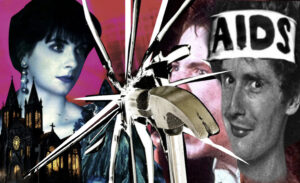The five great lakes (Superior, Michigan, Huron, Erie, and Ontario) have long formed a core part of the American heartland. The large bodies of water enabled large volumes of freight movement, connected to major rivers through states like Ohio and Illinois, and enabled the rapid industrialization of the region.
Today Michigan, Illinois, Indiana, Minnesota, Ohio, and Wisconsin form the core of a shrinking region of the United States. The world’s strongest middle class once thrived in this region and large, wealthy, White cities were shining examples. American industrial prowess and Midwestern cultural might once influenced the entire nation’s politics.
Today the Great Lakes States are in serious decline. Demographically, culturally, and economically. The White population of the area faces increasing poverty at the same time they are being deliberately demographically replaced by their state governments.
In the previous piece, White Papers explored the demographic history and current policy of Michigan, Illinois, Indiana, and Minnesota. In this second installment, we will examine the demographic and policy environments in Ohio, Wisconsin, and further afield in Missouri.
Ohio:
Much like the rest of the region Ohio is a child of the Industrial Revolution and now a major component of the Rust Belt. The state’s economic growth has centered around only a few cities while much of its population continues to become poorer. In the previous 50 years, Ohio has fallen from the 5th most prosperous state in the nation to the 7th, while states like Florida have rushed onto the scene and surpassed it. But, few states can surpass Ohio’s (historic) cultural might. No state, save for Virginia, has given the United States as many presidents as the State of Ohio. Seven holders of America’s highest office were born in Ohio, ranging from the war hero Ulysses S. Grant to the largely forgotten James A. Garfield.
Today, Ohio is the 7th most populous state in the nation, boasting a population of 11.7 million people, making it the 2nd most populous state in the Great Lakes region. With Illinois holding first place.
In the 1940s Ohio boasted a population of some 6.9 million people, 95% of whom were White. By the 1970s, just after the 1965 Immigration Act was passed, the state had surged to a population in excess of 10.6 million with the White share comprising 89.8% of the overall population.
Much like Illinois and Michigan, the Great Migration of African Americans was the first wave of demographic change washed over Ohio. Cities such as Cleveland went from 90.2% White in 1940 to 59% White by 1970. By the 1990s Cleveland was a minority White city and as of the 2020 census, the White share of the population sits at just 32%. Cleveland’s population has shrunk along with this change. In 2020 the city’s population was 372,000, a great fall from the 1950s when the population peaked at 914,000.
Today Ohio has a population that is just 78% White. Whites are responsible for only 70% of the births in the state and the Hispanic population has increased rapidly.

The government of Ohio has enthusiastically embraced this demographic change. In 2018 the Republican governor created the Office of Opportunities for New Americans which is tasked with attracting and integrating immigrants to the state. The state government also releases a regular “New Americans Report” to update the native Ohioans on their replacement.
One of the most recent New Americans Reports gleefully reports that between 2000 and 2018 the foreign-born population of Ohio grew by 56% and surpassed 528,000 people. The report goes on to boast that immigrants to the state are younger, more educated, and more business savvy than the aging White population.
It is worth noting that Ohio has no programs to increase the family formation (and therefore birth) rates among its historic White population, nor does it field a particularly robust set of programs to get Ohioans into higher education or training.
Wisconsin:
Much like its Midwestern neighbors Wisconsin has a reputation for agriculture, industry, and a population with a friendly disposition. Yet, as the demographics of the state change and the focus of economic policies continues to shift away from industries dominated by Whites, the Badger State is becoming less and less recognizable.
In the 1940s Wisconsin’s population was just 3.3 million people, but that population was 99.2% White and had developed a highly advanced economy centered around agricultural production, manufacturing, shipbuilding, and other heavy industries.
By the 1970s, however, the state and its largest city, Milwaukee, had entered an unmistakable demographic decline. Milwaukee had once boasted a population that was in excess of 90% White and overwhelmingly German. So German that the city was once known as the “German Athens of America”. Yet, by the 1970s the city entered a population decline, its Black population exceeded 20% and its White population began an exodus to the suburbs.
Today Wisconsin boasts a population of some 5.8 million people, 78.6% of whom are White. Milwaukee’s population is now minority White with the White share of the population being only 32.3% White as of 2022.
The Wisconsin state government continues to facilitate the demographic transition of the state, with the Department of Children and Families running a refugee resettlement program that has relocated tens of thousands of foreign men and their families into the state. The state government seemingly ignores the fact that 13.4% of the extant child population in the state is already living in poverty and could use the resources afforded to this program.
The state government also provides a wide range of healthcare services to illegal aliens and in some cases, immigrants can even qualify for rental assistance and relief in the state.

Missouri:
The gateway to Western expansion on the North American continent and one of the states known for its stories of racial tension, such as the Black riots and unrest in Ferguson.
Missouri has undergone an incredibly steep demographic transition from a state of White pioneers and engineers to one dominated by large non-White urban areas with high levels of crime and increasingly blatant anti-White hate.
In the 1940s Missouri’s population was 3.7 million strong and 93.4% White. The state’s largest cities: Kansas City and St. Louis were 89.5% White and 86.6% White respectively. Kansas City was known for having one of the most expansive streetcar systems in the world and a highly mobile middle class. Yet, thanks to the Great Migration and subsequent policy changes like the 1965 Immigration Act, the demographics of the state and its major cities began to change, rapidly.
By the 1970s Missouri’s White population had fallen to 4.8 points to comprise 88.6% of the state’s population, while the White population of Kansas City had fallen 12.3 points to 77.2% and St. Louis suffered a 30-point drop in its White population. Making the city just 58.7% White at the start of the decade.
As the 2020 census, the situation had grown more dire. St. Louis is now a minority White city. Whites are just 42.9% of the population of St. Louis and in Kansas City Whites hold onto a slim majority of 59.7%.
The state’s population stands at 6.15 million people 75.8% of whom are White.
Modern Missouri has the 9th highest rate of violent crime in the nation, including the 6th highest homicide rate. Crime is so pervasive that one can find videos of gunfire drowning out a statement by the mayor of St. Louis on the violent gun crime in the city.
The state provides emergency healthcare services for illegal aliens and funding for school districts so that they can support immigrants entering the Missouri school system. The state is certainly better than some in restricting benefits to illegals, but the fact these programs exist when the state’s poverty rate is upwards of 13% and crime continues to rise is inexcusable.
Conclusion:
The Midwest once boasted 30% of the nation’s population and was viewed as one of the crucial political powerhouses of the nation. The industrial states determined elections and provided the nation with numerous presidents from Lincoln to Grant to Truman.
Today the Midwest has barely 20% of the nation’s population and its political influence has largely declined. While Iowa retains the “swing state” label in population culture, and Ohio is often projected as a Republican heavyweight, the reality of their small populations and declining economies has largely stripped them of real influence.
This article originally appeared on White Papers and is republished by The Noticer with permission. Follow the White Papers Policy Institute on Telegram here.





















